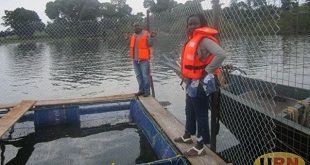
Gulu, Uganda | THE INDEPENDENT | The Minister for Energy and Mineral Development, Ruth Nankabirwa says the government plans to enter into a joint venture or partnership arrangement to operate the country’s national grid when Umeme Ltd’s concession ends.
Umeme Ltd, a private power distributor has been running a 20-year power distribution concession since 2005 with a 20 percent return on investment. The government declined to renew the concession which is coming to an end early next year.
Nankabirwa is of the view that the joint venture or partnership arrangement could offer a better deal for the government. She said it could lead to a reduction in electricity tariff, and avoid a costly buyout price with a likely Umeme Ltd successor.
Speaking at the commissioning of the Electricity Regulatory Authority (ERA) Northern Regional offices in Gulu City on Tuesday, Nankabirwa said her Ministry is already working at ensuring there won’t be any buyout in the future after Umeme Exit the sector.
While its concession will come to an end naturally on February 28th, 2025, the government is expected to pay about $215 million (approximately 798 billion shillings) as a buyout price for all unrecovered capital investments of the power distributor according to Nankabirwa.
She also noted that the proposals aim to ensure that there isn’t another double-digit Return on investment arguing that the Umeme Ltd concession was costly since it was based on commercial purposes.
Nankabirwa suggested that once Umeme exits, the return on investment should be cut to 9 percent to facilitate a reduction in the electricity tariff.
The Minister noted that at the moment, the state distributor, Uganda Electricity Distribution Company Ltd (UEDCL) has been authorized to stand in for the government in the absence of a national electricity company which is yet to be established by her Ministry.
A recent report by Irene Bateebe, the Permanent Secretary Ministry of Energy and Mineral Development indicates that UEDCL requires US$158 million (about 586 billion shillings) to enable it to invest in the distribution system over the next three years.
This is a reduction in the final buyout amount payable to Umeme to US$7.1 million when the concession comes to its natural end by March next year.
The government has also proposed the merger of the three electricity agencies, UEDCL, Uganda Electricity Transmission Company, and Uganda Electricity Generation Company Ltd (UEGCL) to create a national utility company in charge of distribution, transmission, and generation.
During the commissioning ceremony in Gulu, Nankabirwa also explained the government’s energy strategy to boost electricity generation by 2040 in a bid to provide reliable, and affordable electricity to the growing population.
She said the government intends to generate a total of 52,481 Megawatts of electricity by 2040. Other energy potentials the government is eyeing include plans to start the generation of 1,000 megawatts of nuclear power by 2031, 5,000 megawatts of geothermal power from geothermal energy in Kasese district, and 4,000 megawatts of solar power from solar energy.
Currently, the country’s installed electricity capacity stands at 2,048.50 megawatts with the complete synchronization of all six turbines at the Karuma Hydro-power station to the national grid.
The 600-megawatt Karuma Hydro-power station, worth $1.7 Billion is one of the biggest hydro-power projects in the country and has been under construction since August 2013 with funding from the Ugandan Government at 15 percent and a soft loan from the Export-Import (Exim) Bank of China (85 Percent).
With its official commissioning expected in September this year, the Hydro-power dam early this month successfully passed a load rejection test conducted by UEGCL to measure the response of its turbines to an abrupt loss of full load.
*****
 The Independent Uganda: You get the Truth we Pay the Price
The Independent Uganda: You get the Truth we Pay the Price



